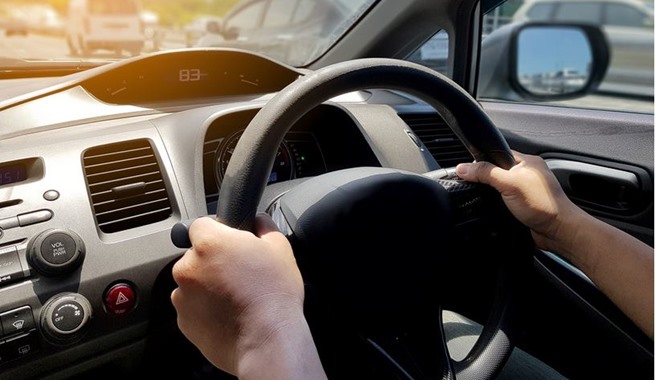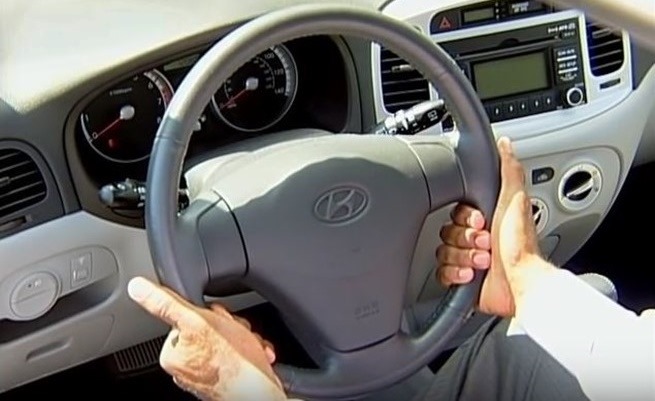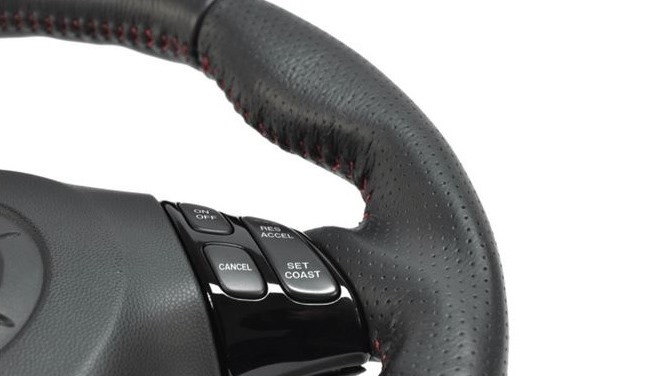Picture this: A driver is holding his phone to his ear with his right hand; he has a take-away cup of coffee in his left hand; and is steering the vehicle with his elbows…
I am sure you would not want to be anywhere near such a driver! (I know I don’t.)
Of course, there is more to the science of hand position while driving than the (obviously) absolute ban on doing it with the elbows (or any other part of your body).
“Keep both hands on the wheel” is a mantra that bears repeating, because the one-handed driver is not in control of the vehicle and is likely to crash in an emergency. But it is also important to place your two hands in a specific position on the steering wheel.

The 9 and 3 rule
For decades, driving instructors have been teaching learners to keep their hands at the 10 and 2 o’clock position. How things have changed! These days, everybody favours a lower placement, with most experts recommending the 9 and 3 o’clock rule. This placement is comfortable for your arms. It allows for smoother and more precise steering. You can turn the wheel close to 180 degrees to the left and to the right. You are also able to access some of the controls (such as the indicator and the windshield) without moving your hands.
There is another important reason why the 9 and 3 rule became so popular: the airbags. If your hands are placed higher on the wheel, you could suffer nasty injuries to your hands, arms, and face when your airbag deploys.

Because of airbags, some driving experts even recommend placing the hands lower, at the 8 and 4 o’clock. However, most agree that 8-and-4 does not give you enough control over the steering wheel and advise changing to that position only occasionally, when you feel that your arms need the rest.
One hand driving
Yes, you should keep both hands on the wheel at all times… except when you absolutely have to take one hand off.
One hand driving is acceptable for short periods of time, for example when you are changing gears in a manual car, or when you need to adjust the controls that are further away.
Backing up is another situation that requires you to break the “two hands” rule. When you are driving in reverse, it may not be enough to rely on the mirrors. Instead, you need to twist your body in the waist and look over your shoulder through the rear window. In order to do that, you have to take one hand off the wheel and place it around the back of the passenger seat. The hand that stays on the wheel should be gripping it at approximately 12 o’clock.

Hand-over-hand or hand-to-hand
There are two main steering techniques for turning corners: hand-over-hand and hand-to-hand.
Hand-over-hand method involves turning the wheel with one hand while the other crosses over to continue the movement. The arms do not cross, the wrists do not twist, and the palms face the wheel throughout.
Hand-to hand method calls for pushing up the wheel with one hand and pulling it down with the other, without crossing over.
The favoured method today is hand-to-hand, also known as push-pull. Hand-over-hand is discouraged because having your hands crossed in front of your face can bring you a lot of pain if your airbag deploys.
However, as most drivers will tell you, hand-on-hand can be too slow in some situations, for example when you need to make an evasive manoeuvre, or when you need to display some tight, accurate steering in a small area.
So, use your best judgment! What is important is that you maintain an efficient and accurate control of the vehicle at all times.
What about the thumbs?
This is a matter of personal preference. You can, but do not have to wrap your thumbs around the steering wheel. Whatever you do, keep your grip on the wheel firm, but relaxed (you don’t want to be a white-knuckle driver).
The manufacturers of new cars often provide little grooves on the steering wheels. If your car has them, make use of them and place your thumbs there!









